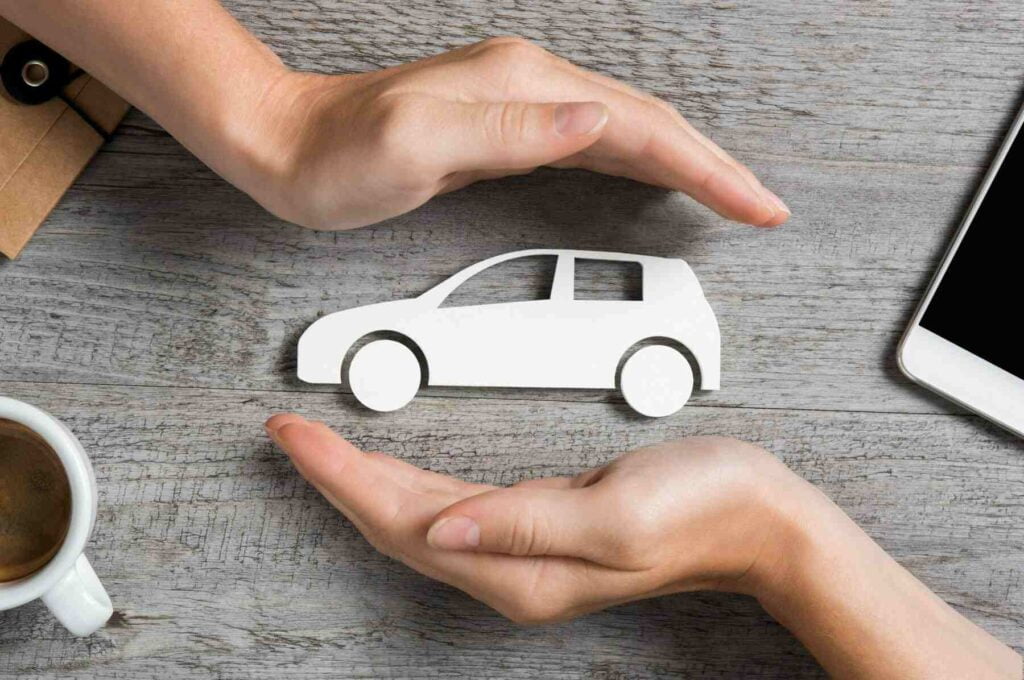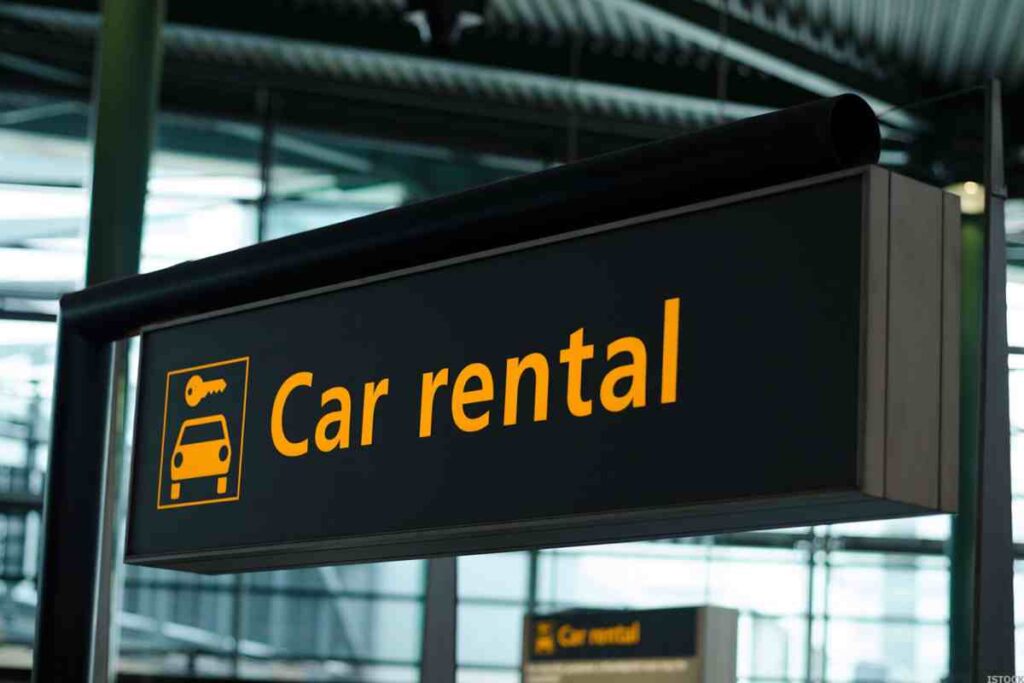Buying a new car is super exciting! But before you can hit the road, there’s one important thing you need to sort out: auto insurance. Whether it’s your first car or you’re a seasoned driver, figuring out car insurance can be a bit confusing. What kind of coverage do you actually need? How do you snag the best rates? And how on earth do you get insurance before you even have the car?
In this guide, we’ll walk you through everything you need to know about getting auto insurance before buying a car. From understanding different types of coverage to comparing quotes and avoiding common pitfalls, we’ve got you covered.
Types of Auto Insurance

Auto insurance typically comes in several different types of coverage, each designed to protect you and your vehicle in different ways. Here are the common types of auto insurance coverage:
- Liability Insurance: This is typically the minimum coverage required by law in most states. It covers the costs of injuries and property damage you cause to others in an accident. It does not cover your own injuries or vehicle damage.
- Collision Insurance: This covers damage to your car resulting from a collision with another vehicle or object, regardless of who is at fault. If your car is financed or leased, your lender may require this coverage.
- Comprehensive Insurance: This provides coverage for damage to your car caused by events other than a collision, such as theft, fire, vandalism, natural disasters, or hitting an animal.
- Personal Injury Protection (PIP): Also known as “no-fault” insurance, this covers your medical expenses regardless of who caused the accident. In some cases, it also covers lost wages and other damages. PIP is mandatory in some states.
- Uninsured/Underinsured Motorist Coverage: This covers your expenses if you’re hit by a driver who doesn’t have sufficient insurance or any insurance at all. It can cover both property damage and medical expenses.
- Gap Insurance: If your car is totaled or stolen, gap insurance can help cover the difference between the car’s depreciated value and what you still owe on your auto loan.
These are the main types of auto insurance coverage, but specific policies and coverage options can vary between insurance companies and states.
Can We Get A Car Insurance Quote Without A Car?
Yes, you can get a car insurance quote without owning a car by opting for a non-owner car insurance policy. This type of insurance is designed for individuals who do not own a car but may need to drive occasionally, such as when renting a car or driving someone else’s car with their permission.
Here are some key points about non-owner car insurance:
- It provides liability coverage for bodily injury and property damage if you’re involved in an accident while driving a car you do not own.
- It’s beneficial if you need to maintain continuous insurance coverage to avoid higher rates in the future due to a lapse in coverage.
- To qualify, you must have a valid driver’s license and you cannot own a car. Most insurers also require that you don’t have regular access to a car, for example, a car owned by another household member.
If you’re interested in getting a non-owner car insurance quote, you can contact insurance companies directly or use their online quote tools. Provide your personal details, driving history, and coverage preferences, and the insurance company will assess your information to provide you with a quote. Remember, this type of policy is typically secondary coverage and is used if the car owner’s insurance doesn’t fully cover the damages in an accident.
How to Get Auto Insurance Before Buying a Car

Getting auto insurance before purchasing a car is a smart move, especially if you want to drive your new vehicle off the dealership lot immediately after purchase. Here’s a step-by-step guide to help you secure insurance in advance:
- Gather Necessary Information: Even if you haven’t chosen a specific car yet, collect all the personal information you’ll need, such as your driver’s license details, driving history, and credit score.
- Decide on Coverage: Determine the type of coverage you need. This could include liability, collision, comprehensive, or a combination of these.
- Get Quotes: Shop around and compare quotes from different insurance providers. You can do this online, over the phone, or by visiting insurance agents.
- Choose a Policy: Once you’ve selected a car, you can finalize the insurance policy. Provide the vehicle identification number (VIN) to your insurer to start the coverage.
- Proof of Insurance: Ensure you have proof of insurance ready to show at the dealership, as you’ll need it to complete the purchase and drive your new car home.
Remember, you must have at least the minimum required insurance coverage to legally drive the car in your state. It’s advisable to arrange for your new insurance policy to start on the day you plan to pick up your new car. If you already have an existing policy, you can simply update it to include your new vehicle.
How to Claim Auto Insurance?
Filing an auto insurance claim is a necessary step to have the resulting damages or injuries covered following an accident. Here’s a step-by-step guide on how to do it:
- Report the Incident: If you’re involved in an accident, it’s important to report it to the police. Then, follow up and get a copy of the report.
- Gather Information: Collect as much information as possible regarding the accident. This includes the driver’s contact and insurance information, the year, make, and model of their vehicle, license plate information, contact information for any passengers or witnesses, time, date, and location of the incident, and a brief description of the event. Also, take photos of all damage to your vehicle, the other vehicle or property involved, and the area surrounding the event.
- Contact Your Insurance Company: Notify your insurance agent or provider as soon as possible. Be ready to provide at least some of the information listed above.
- Submit a Claim: This step involves filling up paperwork, which includes evidence of the covered loss, and submitting it to the insurance company.
- Claim Investigation: The insurer will then investigate the validity of the claim. If the claim is found to be legitimate, the insurance carrier will issue the payment to the policyholder or an authorized party.
- Payment: USAA, for example, will send the repair amount minus your deductible.
Remember, every insurance company has its own process for issuing claims, so the steps may vary slightly. However, this guide should give you a good idea of what to expect.
How to Transfer Insurance from an Old Car to a New Car?
When you purchase a new car and need to transfer your insurance from the old one, the first step is to contact your insurance company. Inform them about the new purchase and inquire about the grace period they offer for transferring the policy.
It’s essential to review your current policy to ensure that the coverage levels meet any new requirements, especially if you’re financing the new vehicle. Provide your insurer with the new car’s details, including the registration number and any modifications. They will then give you a quote for the new policy based on the new car’s make and model, and any changes in your driving record.
If the terms and the quote are acceptable, you can proceed to update your policy. This update will involve adding the new car to the policy and removing the old one if it’s no longer in use. Ensure you receive the updated proof of insurance for your new car, which is necessary for legal and registration purposes.
Keep in mind that while the policy transfer doesn’t incur an extra fee, your premium may change depending on the specifics of your new car and coverage. It’s crucial to complete this process promptly to maintain continuous coverage and comply with legal requirements.
Insurance for New vs. Used Cars
When it comes to insuring a vehicle, the age and condition of the car play a significant role in determining the insurance premiums. New cars are generally more expensive, which translates to higher insurance costs due to the increased price of repairs or replacement in the event of an accident. They often come equipped with the latest safety and anti-theft technology, which can help lower insurance costs to some extent. However, new cars also depreciate rapidly, and owners might need additional coverage like gap insurance to cover the difference between the car’s depreciated value and the amount owed on a loan.
On the other hand, used cars typically have lower insurance premiums because they have already depreciated in value. The cost of parts for older models may be less expensive, which can further reduce insurance costs. However, used cars might lack modern safety features, potentially leading to higher premiums if the insurer deems the car to be a higher risk.
The car’s value is a crucial factor that insurance companies consider when setting premiums. Cars with higher repair costs, such as luxury or high-performance vehicles, will generally have higher premiums. Additionally, cars that are at a higher risk of theft also tend to have increased insurance costs. Insurance companies calculate premiums based on the replacement value of the vehicle, which is naturally higher for new cars. Therefore, while new cars may come with higher insurance premiums, their advanced features can offset some of these costs. Conversely, used cars might benefit from lower premiums due to their reduced value and cheaper parts, but the lack of modern safety features can be a drawback.
What Are The Penalties in US For Driving Without Insurance?
Driving without insurance in the United States can result in severe penalties, which vary by state but generally include fines, license suspension, and vehicle impoundment. Financial penalties can range from a few hundred to several thousand dollars, depending on the state and whether it is a repeat offense.
Additionally, uninsured drivers may face the suspension of their driver’s license and vehicle registration until they can provide proof of insurance. In some states, driving without insurance can lead to community service requirements or even jail time, particularly for repeat offenders.
Beyond these legal consequences, uninsured drivers are also financially liable for any damages or injuries they cause in an accident, which can result in significant out-of-pocket expenses and potential lawsuits. Furthermore, insurance companies may charge higher premiums for reinstating coverage after a lapse due to driving without insurance, reflecting the increased risk associated with an uninsured driving history.
Popular Auto Insurance Companies in the US
Several auto insurance companies in the USA are popular due to their comprehensive coverage options, customer service, and competitive pricing. Here are some of them:
- USAA: USAA holds the top spot for best car insurance company. They offer a wide range of coverage options and are known for their excellent customer service. However, their services are only available to military members, veterans, and their families.
- State Farm: State Farm is the largest auto insurance company in the U.S., with 17% of the market. They offer a variety of coverage options and are known for their comprehensive policies.
- GEICO: GEICO is one of the biggest car insurance companies and is known for their affordable rates. They offer a variety of coverage options and discounts.
- Progressive: Progressive is known for its wide range of coverage options and discounts. They also offer a unique ‘Name Your Price’ tool that helps you find a policy that fits your budget.
- American Family: American Family is known for its customizable policies and excellent customer service.
- Nationwide: Nationwide is recognized for its wide range of coverage options and excellent customer service.
- Erie: Erie is known for its comprehensive coverage options and excellent customer service.
- Travelers: Travelers offers a variety of coverage options and is known for its excellent customer service.
Remember, the best insurance company for you will depend on your specific needs, budget, and the type of coverage you’re looking for. It’s always a good idea to get quotes from multiple companies and compare their offerings before deciding.
Legal Aspects
Auto insurance laws are set and enforced at the state level in the USA. 49 of the 50 states require all drivers to carry an active auto insurance policy. New Hampshire is the only state where you are not legally required to have car insurance, as long as you can show proof of financial responsibility.
Here are some key legal aspects related to auto insurance:
- Minimum Liability Coverage: Forty-nine U.S. states have auto insurance laws requiring drivers to have minimum liability coverage. The specifics of what this coverage entails can vary from state to state.
- Legal Coverage: Legal coverage on car insurance refers to the protection provided by your policy in the event of legal disputes or liabilities resulting from a car accident. This coverage ensures that you are financially protected if you are sued for damages, injuries, or other legal claims arising from an accident where you are at fault.
- Consumer Rights: Consumers have rights when it comes to dealing with auto insurance companies. If you believe your car insurance company is acting unfairly or refusing to honor its contractual obligations, you can file a complaint with your state insurance department. They have the authority to investigate complaints and take appropriate action against the insurer if necessary.
- Legal Action Against Insurance Companies: If all else fails and you decide to pursue legal action against your car insurance company, it may be beneficial to hire an attorney who specializes in insurance law.
Remember, it’s important to understand your rights and the legal actions available to you to protect your interests. Always consult with a legal professional for advice specific to your situation.
FAQs
Q 1. What is a deductible in auto insurance?
Ans. A deductible in auto insurance is the amount you pay out of pocket before your insurance coverage kicks in. For example, if you have a $500 deductible and you have a $2,000 claim, you will pay $500 and your insurance company will pay $1,500.
Q 2. What factors can affect my auto insurance premium?
Ans. Several factors can affect your auto insurance premium, including your driving history, the type of car you drive, where you live, your age, your gender, and the amount of coverage you choose.
Q 3. What is a no-claims bonus in auto insurance?
Ans. A no-claims bonus (NCB) or no-claims discount is a reward given by insurance companies to policyholders who do not make any claims during their policy term. The NCB is usually given as a discount on the premium at the time of policy renewal.
Q 4. What happens if I lie on my auto insurance application?
Ans. Lying on your auto insurance application, also known as insurance fraud, can lead to serious consequences. Your insurance company could deny your claims, cancel your policy, or in some cases, you could face legal penalties.
Q 5. How does auto insurance work if I’m leasing or financing a car?
Ans. If you’re leasing or financing a car, the lender may require you to have certain types of auto insurance coverage, such as comprehensive and collision coverage. This is to protect their investment in the car.
Q 6. How often should I review my auto insurance policy?
Ans. It’s a good idea to review your auto insurance policy at least once a year, or whenever you have a major life change, such as moving to a new address, adding a new driver to your policy, or buying a new car.
Conclusion
In conclusion, obtaining auto insurance before buying a car is a crucial step that ensures you are protected from the moment you drive off the lot. By understanding your insurance needs, comparing providers, and securing the right coverage, you can make an informed decision that provides peace of mind and financial security. Whether you are a first-time buyer or an experienced driver, taking the time to research and purchase auto insurance in advance will not only meet legal requirements but also safeguard your investment and well-being on the road. Remember, being proactive about your insurance needs is the best way to drive confidently and safely.

Join Shubham, a finance enthusiast with a mission to empower readers with the knowledge and tools to achieve financial freedom. Discover smart financial advice and unlock your financial potential.


